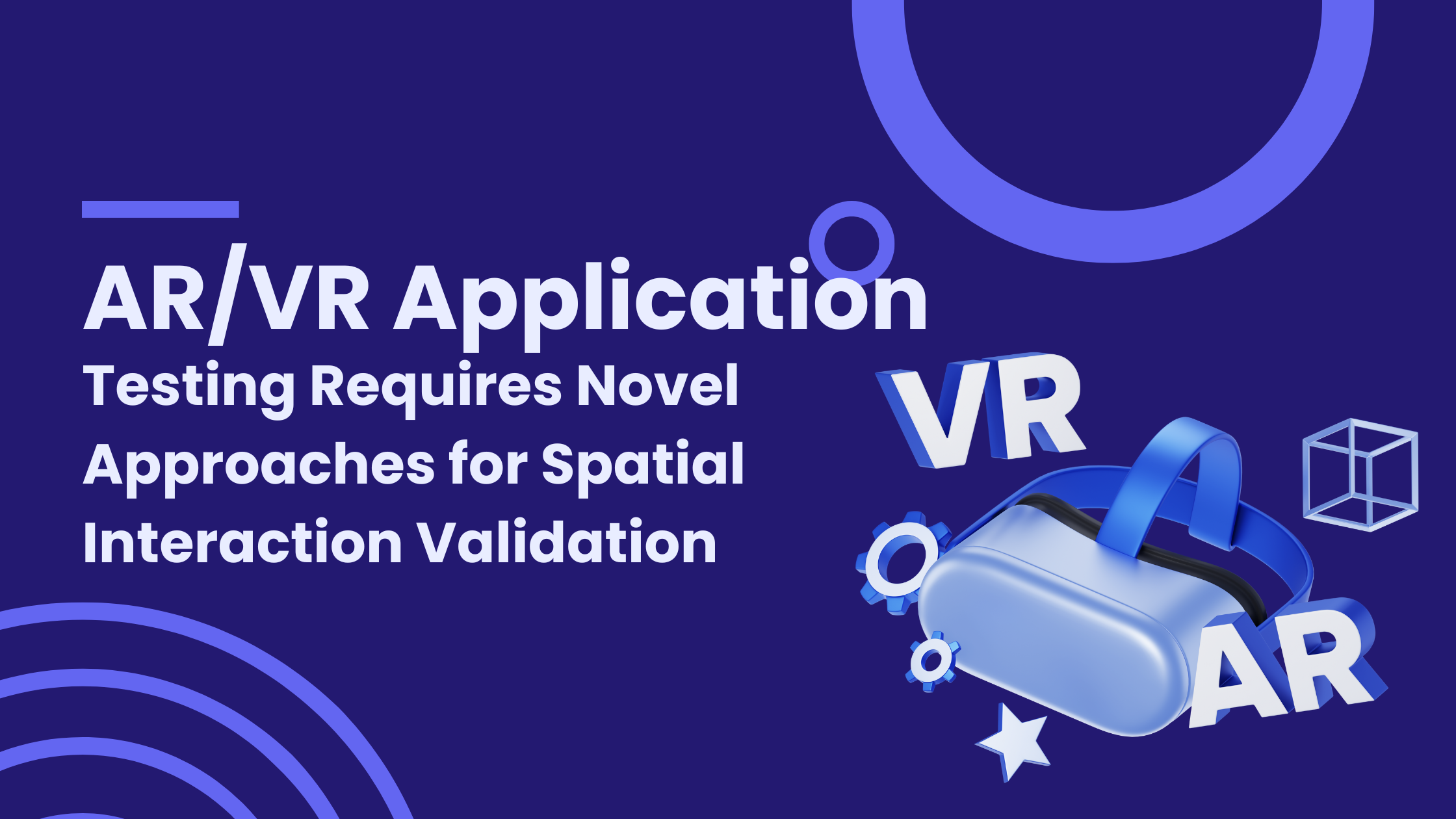Quick Listen:
At the heart of AR/VR experiences is spatial interaction the user's ability to move, manipulate, and interact within a three-dimensional space. Unlike standard digital interfaces that rely on traditional input devices like keyboards and mice, AR/VR environments require real-time validation of how users physically engage with virtual spaces. This makes testing far more complex than standard application QA.
The difficulty in validating spatial interaction stems from several factors. First, AR/VR experiences are highly dependent on the real-time accuracy of motion tracking. A slight delay or discrepancy in how the system tracks a user's movements can break immersion and frustrate users. Moreover, spatial interaction testing often needs to account for a wide variety of physical environments.
VR users are navigating entirely simulated worlds, while AR applications must align digital elements with the real-world environment. As a result, the testing process must be flexible enough to handle unpredictable, real-world factors while still maintaining the integrity of the virtual experience.
Moreover, AR/VR technologies often involve various input devices, from headsets and gloves to haptic feedback systems. Ensuring that these devices interact flawlessly with the virtual environment adds another layer of complexity to the testing process. The multi-faceted nature of AR/VR spatial interactions demands testing that goes beyond traditional usability evaluations, requiring a more immersive and holistic approach to QA.
Innovative Testing Approaches
Given the complexity of spatial interactions in AR/VR, developers and QA professionals are adopting innovative approaches that extend beyond conventional tools used for more static applications. Motion tracking technologies, for example, have become crucial for capturing and analyzing user movements within virtual spaces. By using a combination of sensors, cameras, and wearables, motion tracking can accurately map the user's body movements to the digital environment in real time. This allows developers to test how users interact with virtual objects, spaces, and interfaces, ensuring that the experience feels responsive and natural.
For instance, motion tracking can help test the accuracy of a user's hand movements when interacting with virtual objects. If a user reaches out to grab a virtual item, the system must correctly register the position and trajectory of their hand, with minimal latency. Any lag in this process can break immersion, causing users to feel disconnected from the experience. Through advanced motion tracking, developers can identify and correct such issues, ensuring that the AR/VR environment responds in real-time, just as it would in the physical world.
Additionally, virtual environment simulations are proving to be an invaluable tool in AR/VR testing. These simulations allow developers to create controlled testing environments that mimic real-world scenarios. For instance, a VR application designed for healthcare training might simulate a medical procedure in a controlled, virtual setting. By testing within these simulated environments, developers can address potential issues with spatial interaction before the application reaches end users. These virtual labs offer a safe space to experiment with different interaction scenarios, enabling developers to refine their products in ways that would be difficult or costly in the real world.
Customer Feedback in AR/VR QA
While innovative testing methods such as motion tracking and virtual environments simulations are critical to the development of AR/VR technologies, one aspect of QA remains constant: the importance of customer feedback. Even the most sophisticated testing tools cannot account for all user experiences. This is where direct feedback from users becomes invaluable.
Customer feedback plays a critical role in fine-tuning AR/VR applications. As with any software, users will always interact with systems in ways developers might not anticipate. For instance, users may encounter usability issues or experience discomfort due to motion sickness in certain VR scenarios. Through feedback loops, developers can gather insights that help address these issues and improve the overall user experience.
Effective feedback collection is essential in identifying problems that traditional testing methods may miss. User feedback is widely recognized as a powerful tool for driving continuous improvement in product design. By leveraging feedback from beta testers, early adopters, and post-launch reviews, AR/VR developers can developers can rapidly identify pain points in the user experience and implement solutions. For example, users might report issues with navigation or difficulty interacting with virtual objects due to inaccurate tracking. These insights can be used to fine-tune the application, ensuring it meets the needs of real-world users.
Incorporating customer feedback into the testing process can also help developers stay ahead of trends and expectations. AR/VR is still a relatively new field, and user preferences and needs continue to evolve. By maintaining an ongoing dialogue with users, developers can stay attuned to changes in how people interact with immersive technologies. For example, VR users may provide insights into what makes them feel more immersed in the experience, such as the need for more natural interactions or greater spatial awareness.
Enhancing Immersive Experiences
The future of AR/VR lies not just in creating visually stunning worlds but in ensuring that users can navigate, interact, and engage with these spaces naturally and intuitively. For developers, this means embracing innovative testing approaches that go beyond traditional QA methods. Motion tracking, virtual environment simulations, and user feedback are now critical elements of the AR/VR testing process, allowing developers to create experiences that are both functional and immersive.
Ultimately, the success of AR/VR will not only be determined by its technological capabilities but by its ability to create genuine, engaging, and immersive experiences for users. As the industry moves forward, testing will be at the heart of this transformation, ensuring that AR/VR technologies live up to their full potential. For more insights into improving AR/VR QA, visit Qualtrics or read more about the role of feedback in continuous improvement here.
You may also be interested in: Best Features for Automated Software Testing | ContextQA
Book a Demo and experience ContextQA testing tool in action with a complimentary, no-obligation session tailored to your business needs.
